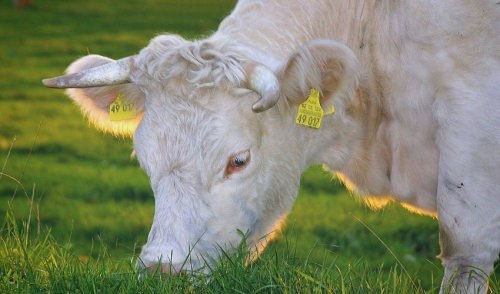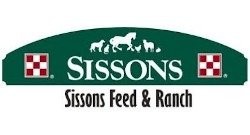
How to Monitor Feed Intake for Cattle
Although spring weather may not have extreme hot and cold temperatures, quick changes and variation of temperatures, plus wind, rain and mud, can alter cattle feed consumption patterns.
Beef cattle experts recommend close monitoring of feed intake and maintaining daily feed records. These are crucial to bunk management and keeping cattle performing efficiently.
Extension feedlot experts at Ohio State University recommend that your feedlot cattle should always be eating fresh, high quality feed no matter what the conditions. They suggest the following to help you monitor feed intake and reach this goal:
Scoring system
Use a feed bunk-scoring system on a scale from zero to five. A score of zero implies that the feed bunk is empty. A score of zerominus (0-) means the bunk has been empty for more than an hour. Zero-plus (0+) means the bunk is empty except for a few fines or clumps of feed. A score of 1 means less than an inch of feed is left in the bottom of the bunk. A score of 2 means 2 inches of feed is left. A score of 3 means three inches and so on.
If the score is zero for two consecutive days, increase feed delivered to cattle by 5 to 10 percent. If the score is 2 or more, reduce feed offered by 5 to 10 percent.
On the bunk sheet record the date, pen of cattle, amount of feed delivered and a bunk score. A feeder should have at least four days of records whenever determining how much feed to put in the bunk.
The bunk score, combined with the amount of feed provided, can tell you if intakes are going up, coming down or holding steady. Scores constantly in the 2 to 3 range may lead to feed wastage and reduced feed efficiency.
Cattle Monitoring
- Observation—Look at the cattle when making a feed decision. If the bunk is empty, determine if cattle look hungry or content? If they look content, wait for a second or third day of empty bunks before increasing the amount of feed.
- Manure—Tall firm stools are a sign cattle are consuming significant levels of roughage. Flat brown stools indicate cattle are eating higher amounts of grain but are not having digestive upsets. Flat gray stools, a sign of acidosis, may be observed before an actual drop in intake. Pens with a majority of flat brown stools and a few gray stools are a sign that cattle are optimizing feed intake.
Environmental Monitoring
- Seasonal variation—Feeding schedules may need to be changed during different seasons of the year.
- Weather conditions—Changing weather can cause erratic intake patterns by cattle. Intake frequently increases prior to a storm, declines during the storm, and increases after the storm.
Feed Monitoring
- Feed mixing—If every handful of feed coming out of the bunk is not uniform, cattle are not all on the same diet, creating differences in body condition.
- Feed accumulation—Don’t allow feed to accumulate from feeding to feeding.
- Empty bunks—It is all right for cattle to clean bunks once a day as long as they are not out of feed to the extent they become restless or over eat when fed again.
- Fines—Make sure finely ground meals and heavy ingredients such as minerals are not all falling to the bottom of the bunk.
- Water—Feed intake is related to water intake. A slow water fountain during hot weather will reduce intake. Clean water fountains on a regular basis.
Land O'Lakes Purina Feed LLC has developed a variety of feeds to optimize feed intake and feed efficiency. Steak Maker® supplements, for example, can be tailored to fit the specific demands of your feedlot operation.
Land O'Lakes beef consultants also can use their proprietary Ration Balancing Program to help you design a feed program specific to your situation. Contact your local cooperative for more information.
